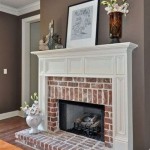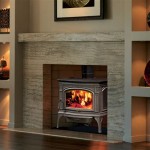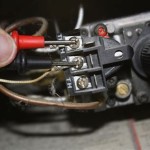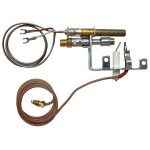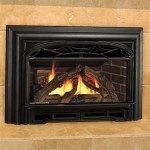The Enduring Allure of an Open Fireplace in the Kitchen
The open fireplace, a primal symbol of warmth and sustenance, has long held a significant place in human history. In the modern era, while central heating and sophisticated cooking appliances dominate, a resurgence in the appreciation for open fireplaces in the kitchen is evident. This article explores the historical context, practical considerations, and aesthetic appeal of incorporating an open fireplace into the culinary heart of the home.
Historically, the fireplace was not merely a source of heat; it was the central hub of domestic life. Food preparation, heating water, and providing light all revolved around the open fire. The kitchen, as we understand it today, evolved directly from the functional space surrounding the hearth. From medieval castles to modest cottages, the fireplace was the undisputed center of the home. The design and size of the fireplace often reflected the wealth and status of the household, ranging from simple, utilitarian structures to elaborately adorned focal points.
As technology advanced and new methods of heating and cooking emerged, the open fireplace gradually lost its position as a necessity. However, it never entirely disappeared. Instead, it has been reimagined as a statement piece, a nostalgic reminder of simpler times, and a source of unique culinary experiences.
The Practical Considerations of a Kitchen Fireplace
Integrating an open fireplace into a modern kitchen design requires careful planning and consideration of several crucial factors. These considerations extend beyond simple aesthetics and delve into the practical aspects of safety, functionality, and building regulations.
Ventilation: Proper ventilation is paramount. An open fireplace requires a functional chimney that effectively draws smoke and fumes away from the interior of the kitchen. The chimney's design, height, and diameter must comply with local building codes and be appropriate for the size and design of the fireplace itself. Insufficient ventilation can lead to smoke backdraft, creating a health hazard and rendering the fireplace unusable. A professional chimney sweep should inspect and clean the chimney regularly to ensure optimal performance and prevent the buildup of creosote, a highly flammable substance.
Fuel Source: The choice of fuel source will significantly influence the fireplace's design and operation. Wood-burning fireplaces offer a traditional appeal but require a readily available and sustainable source of firewood. Considerations must be given to storing firewood and managing the associated debris. Gas-burning fireplaces offer a more convenient and cleaner alternative, requiring a gas line connection and potentially a propane tank. The selection of a gas fireplace may necessitate adjustments to the fireplace's design to accommodate gas lines and safety valves. The environmental impact of each fuel source should also be considered, weighing the carbon footprint of burning wood against the emissions associated with natural gas.
Safety Measures: Safety is of utmost importance, particularly in a high-traffic area like the kitchen. A fireplace screen or guard is essential to prevent sparks and embers from escaping the firebox and potentially causing burns or igniting flammable materials. Heat-resistant materials, such as brick, stone, or concrete, should surround the fireplace to protect adjacent surfaces from excessive heat. A fire extinguisher should be readily accessible and occupants should be educated on its proper use. Carbon monoxide detectors must be installed to alert occupants to dangerous levels of this odorless and colorless gas, which can be produced by incomplete combustion. Regular inspections and maintenance are crucial to ensuring the fireplace operates safely and efficiently.
Building Codes and Regulations: Before undertaking any fireplace installation, it is imperative to consult with local building authorities and obtain the necessary permits. Building codes often dictate specific requirements for fireplace construction, ventilation, and safety features. These regulations are designed to protect occupants and prevent fire hazards. Failure to comply with building codes can result in fines, delays, and potentially dangerous conditions. Hiring a qualified contractor with experience in fireplace installation is crucial to ensuring compliance with all applicable regulations.
The Aesthetic Appeal of a Kitchen Fireplace
Beyond its practical considerations, an open fireplace offers a unique aesthetic appeal, transforming the kitchen into a warm and inviting space. The visual presence of a crackling fire can evoke feelings of comfort, nostalgia, and a connection to traditional cooking methods. The design possibilities are vast, ranging from rustic stone hearths to sleek, modern installations.
Architectural Integration: The fireplace should be seamlessly integrated into the overall architectural design of the kitchen. The style, materials, and dimensions of the fireplace should complement the existing cabinetry, countertops, and flooring. A rustic kitchen might feature a large, stone fireplace with exposed brickwork, while a modern kitchen might incorporate a minimalist fireplace with clean lines and stainless steel accents. The fireplace can serve as a focal point, drawing the eye and creating a sense of visual interest. Careful consideration should be given to the fireplace's placement within the kitchen layout, ensuring it does not obstruct traffic flow or interfere with other functional areas.
Material Selection: The choice of materials for the fireplace surround and hearth plays a significant role in its aesthetic appeal. Natural stone, such as granite, slate, or limestone, can create a sense of timeless elegance and durability. Brick offers a classic and versatile option, lending a sense of warmth and character to the kitchen. Concrete can be used to create a modern and industrial look, while tile provides an opportunity to add color and texture. The materials selected should be heat-resistant, durable, and easy to clean. The fireplace surround can be further enhanced with decorative elements, such as mantels, corbels, and tile mosaics.
Atmosphere and Ambiance: The soft glow of a fire creates a unique atmosphere and ambiance in the kitchen. The flickering flames cast dancing shadows, creating a sense of warmth and intimacy. The crackling sound of burning wood adds to the sensory experience, evoking feelings of comfort and relaxation. The fireplace can serve as a gathering place for family and friends, fostering a sense of connection and conversation. The addition of comfortable seating near the fireplace can further enhance the cozy and inviting atmosphere. During colder months, the fireplace provides supplemental heat, creating a warm and welcoming space to escape the chill.
Styling and Decorating: The fireplace mantel offers an opportunity to showcase personal style and add decorative elements to the kitchen. The mantel can be adorned with artwork, photographs, candles, or seasonal decorations. A collection of antique cooking utensils or pottery can further enhance the fireplace's rustic charm. The fireplace can also be used to display cookbooks or other culinary-themed items. The styling of the fireplace mantel should complement the overall design of the kitchen and reflect the homeowner's personal taste.
The Culinary Potential of an Open Fireplace
Beyond its aesthetic appeal, an open fireplace can also offer unique culinary opportunities, allowing for the preparation of dishes with distinctive flavors and textures. Cooking over an open fire is a centuries-old tradition that imparts a smoky aroma and caramelized crust that cannot be replicated with modern cooking appliances.
Grilling and Roasting: An open fireplace is ideal for grilling and roasting meats, vegetables, and other foods. The intense heat of the fire sears the food, creating a flavorful crust while keeping the interior moist and tender. A grill grate can be placed over the fire to cook smaller items, such as steaks, burgers, and skewers. Larger cuts of meat, such as roasts and whole chickens, can be suspended over the fire on a spit or placed in a Dutch oven. The distance between the food and the fire can be adjusted to control the cooking temperature. Cooking over an open fire requires constant attention and monitoring to prevent burning, but the resulting flavors are well worth the effort.
Smoking: Adding wood chips or chunks to the fire can impart a smoky flavor to the food. Different types of wood, such as hickory, mesquite, and applewood, will produce different flavor profiles. Smoking food over an open fireplace requires careful control of the temperature and smoke levels. A smoker box can be used to contain the wood chips and regulate the amount of smoke. Smoking food over an open fireplace is a time-consuming process, but the resulting flavors are rich and complex.
Baking: While less common, it is possible to bake bread and other items in a Dutch oven within the fireplace. The Dutch oven acts as a miniature oven, trapping the heat and creating a consistent cooking environment. Baking in a Dutch oven over an open fire requires careful attention to temperature control and timing. The results can be surprisingly good, producing bread with a crusty exterior and a soft interior.
Specialized Cooking Tools: Several specialized cooking tools can be used to enhance the culinary experience of cooking over an open fireplace. Tripods with adjustable hooks can be used to suspend pots and pans over the fire. Cast iron skillets and Dutch ovens are ideal for cooking directly over the coals. Long-handled tongs and forks are essential for safely handling food near the fire. Heat-resistant gloves or mitts are necessary to protect hands from the intense heat. With the right tools and techniques, an open fireplace can be transformed into a versatile and rewarding cooking appliance.
The inclusion of an open fireplace in the kitchen represents a confluence of historical tradition, aesthetic appreciation, and culinary innovation. While requiring careful planning and consideration, the benefits of warmth, ambiance, and unique cooking opportunities makes it a compelling option for those seeking to infuse their culinary space with character and charm. The enduring appeal of the open fire ensures its continued relevance in the modern home.

Kitchen With Open Fire Fireplace Rustic Sweet Home

9 Cozy Kitchens With Fireplaces Fireplace Kitchen

Wood Burning Kitchen Fireplace

Hot Trends Give Your Kitchen A Sizzling Makeover With Fireplace Decoist

6 Beautiful Kitchens With Fire Elements Kitchen Studio Of Naples Inc

Hot Trends Give Your Kitchen A Sizzling Makeover With Fireplace Decoist

7 Seriously Surprising Spots For A Fireplace Bob Vila

25 Fabulous Kitchens Showcasing Warm And Cozy Fireplaces Kitchen Fireplace Rustic Modern Interior

7 Reasons To Consider A Fireplace In Your Kitchen Makeover Hadley Court Interior Design Blog

Is That A Fire In The Kitchen
Related Posts

